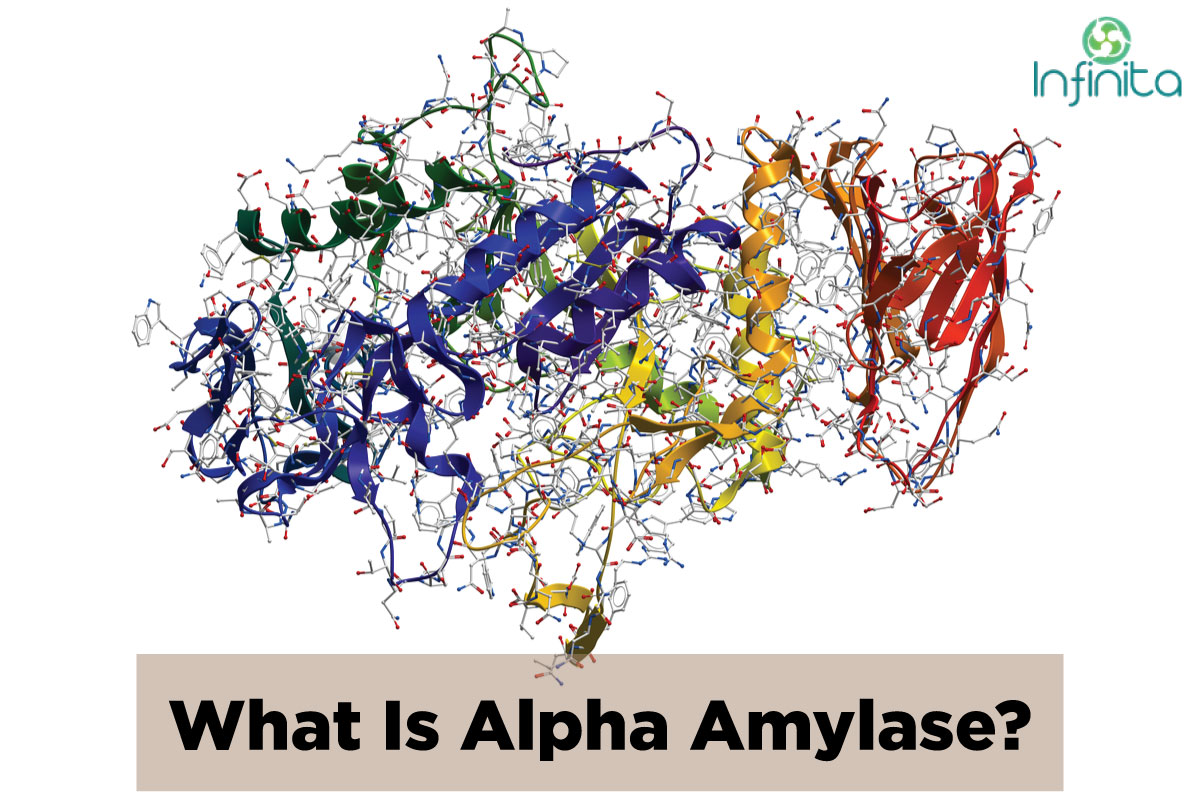The starch-degrading enzyme has gained key importance in the food, pharmaceutical, brewing, textile, paper, and chemical industries. It is used in industrial processes to hydrolyze starch into glucose and maltose, and in a liquefaction process that transforms starch into glucose and fructose syrups.
In this article, we’ll highlight some of the most important industrial uses of amylase, with notes on the importance of the source of the enzyme. We’ll start with perhaps the most popular application of amylase.
Amylase in the Confectionery Industry
Amylase enzymes are essential in the creation of chocolate slurries to produce chocolate syrup. It texturizes the starches in chocolate so the syrup does not become thick. With amylase, it is possible to produce chocolate syrups with both a high cocoa content and excellent flow properties.
Chocolate syrup is made by alternately adding cocoa and sweetener to water until solids reach 58 to 65 percent of the mixture by weight. Then an amylase is added to the mixture while raising the temperature of the slurry almost to its boiling point. The resulting syrup can be added to non-acidic chocolate mixes for the use of quiescently frozen chocolate.
Amylase in the Paper Industry
The paper industry uses starch paste as a mounting adhesive. It often has to be modified with alum or a protein-based glue to facilitate its removal, but this can make paper brittle. Alpha-amylase can hydrolyze in the raw starch used for coating and sizing the paper in lieu of expensive, chemically modified starches.
Amylase for Baking Bread
Amylases play a useful role in the production of baked goods that use yeast as a leavening agent. For over 50 years, fungal and malt alpha-amylases have been used to degrade starch into small dextrins on which yeast can feed.
This action enables yeast to work continuously while the bread is being proofed. Amylases improve crumb texture and increase the volume of the loaf. The release of glucose and maltose from starch enters a Maillard reaction that enhances the browning of the crust and develops the bread’s flavour. Amylases are typically added to commercial flour mixes at the flour mill.
Amylase for Desizing Textiles
Textile manufacturers apply starch for warping to give cloth added strength as it is being woven. This makes the cloth softer. It reduces the loss of thread by friction, and it reduces the production of static electricity.
After weaving, the starch must be removed before the cloth is dyed. Textile manufacturers use amylases to hydrolyze and solubilize the starch, which is then washed out to make the finished product stiffer.
Fabrics are sized with starch. Alpha-amylase removes starch so the cloth can be washed, bleached, and dyed. Amylases are critical for the production of blue jeans.
Amylase for Manufacture of Oligosaccharide Mixtures
Corn starch can be digested with a mixture of alpha-amylase, beta-amylase, and pullulanase into an oligosaccharide mixture of a small amount of glucose and the larger amount of maltose, maltotriose, and larger malto oligosaccharides. When this mixture is spray-dried, it becomes highly hygroscopic. In small amounts, it can regulate the moistness of the foods to which it is added, without making the product excessively sweet. Because this mixture has a low glucose content (around 2 per cent), it is less viscous than high-fructose corn syrup and is useful for preventing the crystallization of sucrose in foods.
Amylase for Direct Fermentation of Starch to Ethanol for Making Beer
In traditional beer production, brewers mix malted barley with hot water to make a mash. Choosing the ratio of grain to water and then holding the mixture at a given temperature optimizes the activity of alpha- or beta-amylases, producing different amounts of alcohol content, as well as distinctive aroma, mouthfeel, and flavour.
The addition of amylase reduced the amount of malt needed to make beer. Amylases convert starches into fermentable sugars. They can be added to mash made of barley or even corn, other grains, or potatoes to enhance the production of ethanol, using methanol as a substrate.
Amylase for the Production of Detergents
A key challenge in formulating detergents is enhancing the bleaching effect without damaging the colours in the washed fabric. Adding amylase to a detergent blend stabilizes bleaching agents so they remove stains without affecting the dye in the thread of the cloth.
Amylase for the Manufacture of High-Fructose Syrups and Maltose
Syrups with a fructose content of up to 42 per cent, known commercially as HFCS as high-fructose containing syrups, or, in the US, as high-fructose corn syrup, require the enzymatic isomerization of glucose with isomerase. The first step in their production is the conversion of starch into glucose by enzymatic liquefaction and saccharification.
Also Read: How To Hire the Best Roof Repair Company
Maltose is widely used as a sweetener and as an IV agent for maintaining pressure in the human body. Food manufacturers use maltose as a non-hygroscopic stabilizing agent because of its tendency to be minimally crystallized. While Americans associate maltose production with corn, it can also be made from sweet potato and cassava.
The concentration of the starch slurry is adjusted to 10 to 20 percent for the production of medical-grade maltose and 20 to 40 percent for food-grade maltose. Most manufacturers prefer thermostable amylase produced from B. licheniformis and B. amyloliquefaciens.



